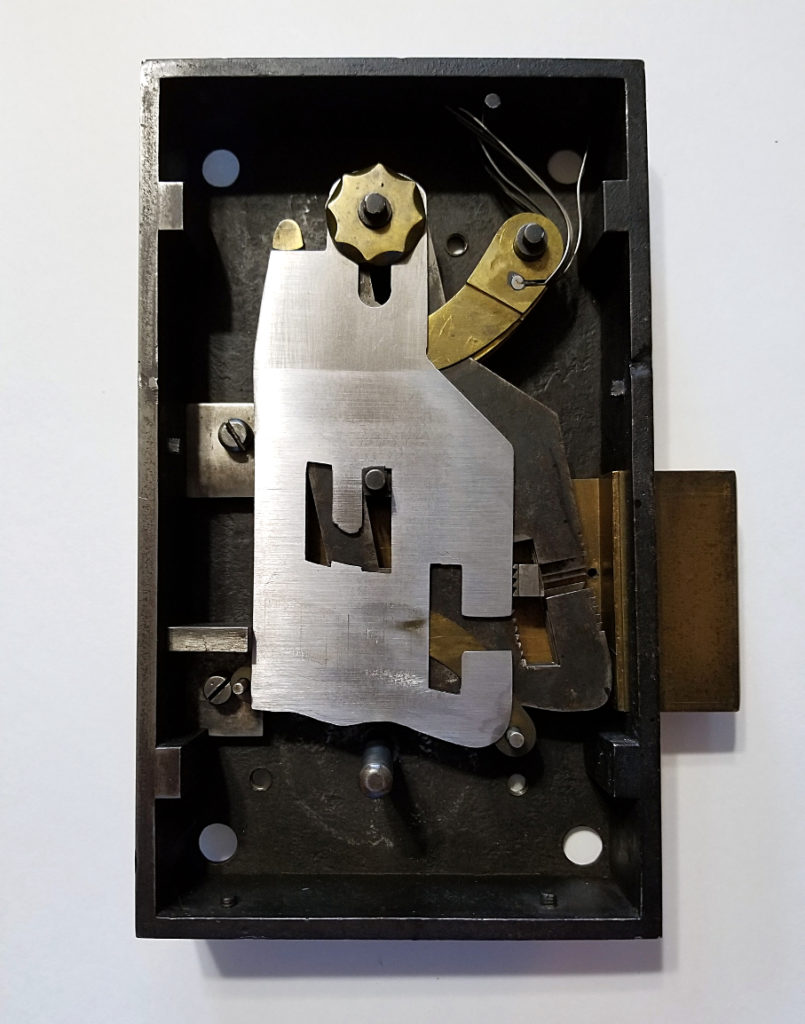William Hall – 1843
Patent 3221
Patented August 17, 1843 by William Hall of Massachusetts, this lock represents the first in a series of 4 patents, with the latter 3 building on and improving this one.

This lock is unique in it’s lever design, utilizing a “swing lever” mechanism. Each key would have come with two sets of bits, one for locked position X and one for position Y. 
The key above is a skillful re-creation of the original by Lynn Collins. It features both sets of bits (referred to as set X and set Y below), each marked with a number and one set marked with a dot to distinguish the two sets. The smaller image above shows a comparison of the two bit sizes. The bits are held in place by a screw. The immovable bit on the far end of the key is sturdier to throw the bolt, while the changeable bits interact with the levers.

Between each lever are two plates, labeled A in the reference photo to the left, of different material of construction to keep the levers from contacting each other to allow for smoother operation. The upper plate is also attached to a spring to assist in vertical operation of each lever. Each lever has two sets of slots cut in them, D and E. Two studs (stumps/fences), B and C, are present. Stud B is fixed to the lock case and is used for the slots in the levers set in the “swing” position (left photo below). Stud C is fixed to the bolt F and is used for the slots in the levers that remain in the vertical position (right photo below). When the key is turned to the lock position, levers associated with (for ex.) bit set X move vertically so that the slot D is aligned with stud B. Stud C moves the levers to the right while the key lifts the levers in alignment with the slot D resulting in the lever being locked in the “swing” position. Levers associated with bit set Y move only vertically while the bolt moves through slot E in them. The reverse occurs in the unlocking process. Each bit can be switched from set X to Y or vice versa individually to provide a new locking combination.
If a key is impressioned with a set of bits, one could simply change out a few bits from the other set of bits and create an entirely new key quite unlike the one previously impressioned and thus rendering the impression obsolete. Thus, this lock builds on the Solomon Andrews style re-keying by adding a second position to each lever for added security.

The photo on the left shows the markings on the bolt. A keen observer will note the name is not William Hall like the patentee, but rather H.C. Jones. Henry Jones is the pantentee on record for the second evolution of this lock which was patented in 1845. The date on this lock, 1844, places this patent in the hands of Henry Jones prior to the second iteration. While the exact relationship between Mr. Hall and Mr. Jones is unknown, this lock helps document the duration of their relationship.



